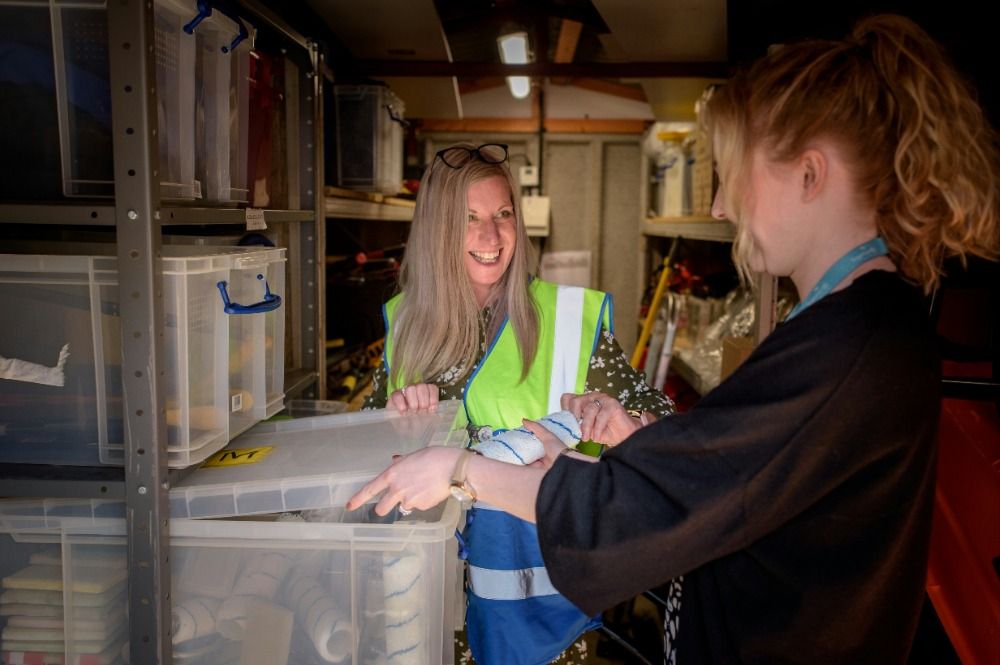5 easy ways to streamline your inventory planning
The eCommerce industry has been growing consistently for over two decades. But nothing compares to the growth we've seen over the past couple of years.
Before the pandemic, eCommerce made up around 13.6% of global retail sales. In 2020, that figure rocketed to 18%, and it's predicted to be 19.5% in 2021.
People turned to online shopping when it was the only option, and once you start to buy products online, it's rare that you go back to the high streets — what began as a necessity has now become a habit for millions worldwide.
And I'd bet you couldn't find an expert who will predict eCommerce's foothold on global sales will do anything other than increase over the next decade.
However, with high-speed growth comes many challenges — not just to eCommerce founders but also to the whole global ecosystem, which has been at a breaking point all year. As we look ahead to 2022, one of the best ways to combat these challenges is to improve your inventory planning.
What is inventory planning?
Inventory planning is one of the most challenging parts of running an eCommerce business. It involves forecasting the demand for your products and understanding when to place purchase orders for new inventory.
Successful inventory planning and management mean you'll always have enough inventory in stock to meet demand from customers.
New: We just launched Wayflyer Inventory — Source great products, faster. Learn more here.
Why inventory planning matters now more than ever
It's easy to look at the global supply chain issues as a 2021 problem. However, as the clock strikes midnight on December 31st, nothing will change right away.
The past couple of years have seen a perfect storm impacting supply chains, and there isn't an overnight fix.
First, COVID-19 caused factory closures and the majority of ports globally to slow down.
With so many lockdowns, restrictions, store closures, and people spending more time at home, everybody turned to online shopping, which created more demand for shipping. And quite simply, there aren't enough boats to match that demand.
With more businesses trying to ship more products across the sea, freight has also become more expensive.
This means many small to medium-sized eCommerce businesses are getting priced out by more prominent, established brands paying through the roof for any space they can find on boats.
To illustrate this, data from Drewry shows that the price of a 40ft container has risen from under $2,000 in November 2019 to more than $9,000 in November 2021.

And on top of COVID-19 and shipping issues, some areas of China — including manufacturing areas like Guangdong, Jiangsu, and Zhejiang — are subject to electricity rationing measures.
This means that production is slowing down as many factories operate for fewer hours per week. It's also causing increased manufacturing costs as China's coal and electricity prices have risen this year.
So it's likely that however you get your inventory, it's costing you a lot more of your gross margin than it did 18 months ago and also arriving much slower. It's possible to eat these costs and delays for a while, but it's not sustainable.
So what can you do? Here are our best tips for getting ahead of the game…
5 Tips for eCommerce inventory planning in 2022
1. Start planning early
Heading into 2022, the most significant insight we've taken from speaking to hundreds of eCommerce founders and operators is that planning is essential.
And the only way to get around many of the current (and future!) inventory and supply chain problems is to plan ahead and get your orders in earlier.
In 2019, and 2020, most businesses would have ordered their inventory for Black Friday and Cyber Monday around August. In 2022, it's going to go to April—maybe earlier. You have to be planning that far ahead.
Early planning isn't just essential for the holidays. You'll want to be thinking as far ahead as possible with all of your purchase orders in 2022, also potentially looking to make larger than usual orders to ensure you always have sufficient stock levels.
2. Increase your supply chain visibility
It's not the biggest problem in the world if your inventory is eight days late. However, it is a huge problem when you don't know it will be eight days late.
If you know your inventory is delayed, you can adjust your marketing and manage your current stock levels to avoid running out of products before your new stock arrives.
If you experience delays without warning, it will result in a terrible experience for your customers and plenty of headaches for you.
The solution to avoid these issues is to improve your supply chain visibility.
Ideally, you'll want to send someone to go and check out the factories your products are being made in.
This will help you verify what stage of the process your product is at and give you peace of mind that everything is in hand and going to plan.
Sometimes it's not possible to get someone from your team to your factory, especially if it's on the other side of the world.
In this case, you could look to work with a local inspection agency that will send someone to the factory on your behalf.
If you can find a way — either by sending an employee or a third party — to go and actually see your factory and see the production lines, then you're going to be able to better understand the production process and plan around it.
3. Explore your freight options
Ecommerce founders and operators only really use air freight for two reasons:
- They absolutely need to get their inventory ASAP
- Their products are very light and very high margin, so they can eat the costs
In 2022, air freight might become a necessity for at least some of your inventory. We're seeing some businesses make larger purchase orders and using air freight to deliver 20, 30, 40% of their inventory to their U.S. or European fulfillment centers.
This means they can fulfill short-term orders and ensure customer happiness, with the rest of the orders arriving via sea (knowing there will be delays).
With this approach, your margins will suffer on the inventory carried by air. If you can make it work, it's better than being forced to take back orders or jeopardize customer relationships by leaving them waiting.
4. Investigate moving your production closer to home
We see several businesses exploring options to move their manufacturing to locations that deliver inventory to their warehouses or fulfillment centers by rail or road. This helps you move away from being held hostage by ocean freight prices and timelines.
In Europe, we see businesses looking at manufacturing in places like Portugal and Turkey, especially in the textiles and apparel industries.
And in the U.S., we're seeing more founders looking at manufacturing options in Mexico or South America. This also helps to avoid the U.S. tariffs placed on imports from China.
Moving your factory can take months, so before making any changes, you'll want to stock up on as much inventory as you possibly can to ensure a smooth transition that delivers a seamless experience for your customers.
This isn't a short-term fix, though. It's a long-term decision about how you want to operate your business.
It could save you tax on imports and plenty of headaches once everything is set up. It's not a decision you should take lightly or to solve a short-term problem.
5. Understand your financing needs
At any time, a large percentage of your capital can be locked into your inventory as it has to be paid for upfront.
Most eCommerce businesses have 30/70 payment terms with manufacturers — so 30% payment on order, then 70% on shipment.
This creates a cash flow problem, and this problem is compounded when you have to place larger orders or spend more on freight to ensure your inventory is arriving on time.
One solution to your inventory cash flow problems is to explore some external funding options. Now, I get it; external financing can sound scary.
Many financing options can feel like you're digging your business into a hole where you have to give up some security, sell equity (and therefore give up a percentage of all future profits), or put a lien on your assets. However, there are other options available to you.
One of the options that more and more eCommerce businesses are starting to use is revenue-based financing — something we offer at Wayflyer.
Revenue-based financing gives you the funding you need to buy inventory and is repaid using a percentage of your daily sales. It lets you grow faster without many drawbacks of traditional funding options.
And because revenue-based financing is paid back as a percentage of daily sales, it helps lower your risk. If you have a slower month, you pay less back.
As you think about your inventory for 2022, you should also think about how you'll finance any orders and how they'll impact your cash flow. If you'd like to chat, we're here for you.
The brands with inventory will win
Running out of stock is sometimes celebrated as a badge of honor. Here's the truth: it's actually the worst thing that can happen to any eCommerce business.

In 2022, your focus should be on inventory planning and finding ways to always have inventory available to sell, despite the global supply chain issues.
Some of the options we've discussed here will impact your bottom line — especially air freight and moving manufacturing closer to home.
You need to weigh up these costs with the impact stock outs could have on your business. When you don't have inventory, you can't make any money.



